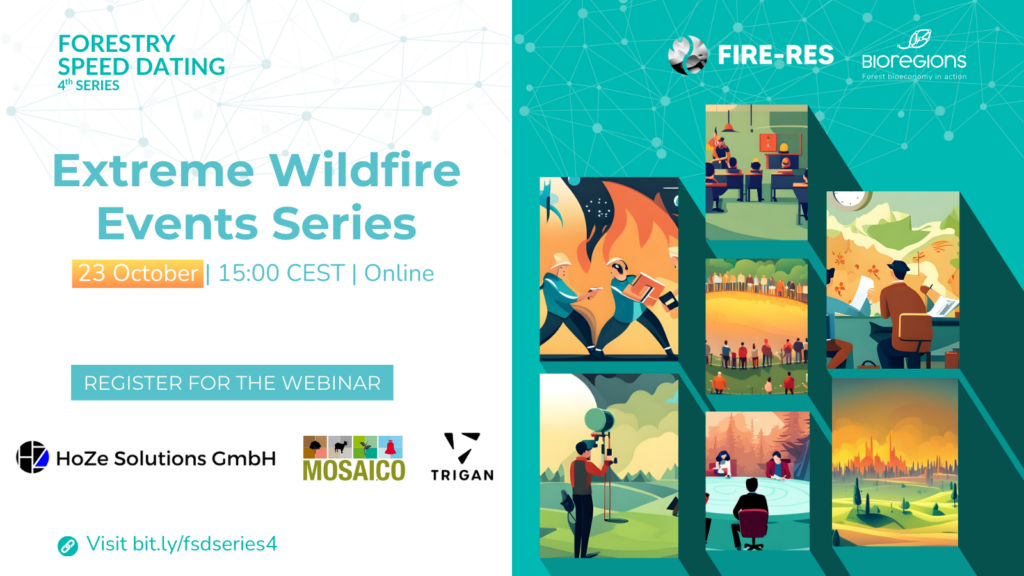
You are cordially invited to attend the first webinar on 23 October at 15:00 CEST. For this series, Bioregions is collaborating with the FIRE-RES project. Register here to find out about some exciting FIRE-RES Open Innovation Challenge (OIC) participants’ innovations:
- Trigan’s ‘Societal Operating System for Disaster Management’
- The Mosaico Approach to ‘Building Resilience Against Wildfires’
- HoZe Solutions’ ‘Data-informed Asset Protection Strategies’
Join the event to ask these innovators questions, give feedback on their solutions, explore collaboration opportunities, put yourself forward as a product tester, early adopter or adviser, and connect with a host of international innovators from the OIC, FIRE-RES, Firelogue and EFI networks.
Meet the innovations:
Trigan is a platform dedicated to improving urban living by enabling communities to address shared challenges. Using AI-powered societal operational systems focused on disaster management, the platform allows users to declare disaster situations through a democratic process, propose and vote on response initiatives, and allocate resources based on expert consensus. Users can complete tasks and earn rewards for contributing to a positive change. Trigan leverages digital twins, sensors, and artificial intelligence to create a continuous engagement and impact feedback loop.
Mosaico is a project dedicated to fostering effective social engagement and proactive wildfire prevention through landscape management. By employing participatory and cost-effective governance, the project aims to reduce the impact of wildfires through agro-silvopastoral practices—integrating agriculture, livestock, and forestry activities to gradually restore the mosaic landscape. This approach not only enhances community resilience against wildfires but also mitigates risks. Additionally, the initiative helps retain and attract populations in disadvantaged mountain areas like Las Hurdes, Spain.
HoZe Solutions provides risk assessment and mitigation services to the needs of critical infrastructure owners and managers, including power lines, telecommunications, hospitals, the tourism sector, forestry, agriculture, and entire communities. Through its proprietary dashboard, users can conduct inspections to visualise and establish defensible spaces around their assets. The dashboard also enables simulations of potential wildfires, considering factors such as vegetation, topography, and weather, as well as the effectiveness of containment strategies. These simulations are grounded in experimental fires and controlled burns data, providing cost estimates and fire suppression strategies.

